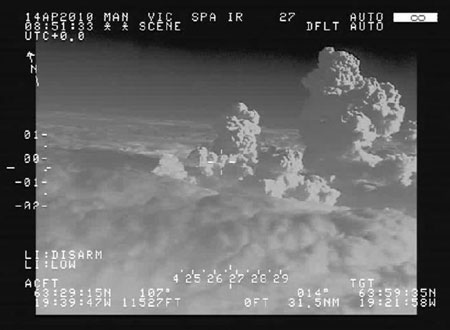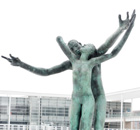Global General
Volcano erupts under Iceland glacier, hundreds flee
(Agencies)
Updated: 2010-04-14 22:18
 |
Large Medium Small |
REYKJAVIK - A volcanic eruption in southern Iceland spewed black smoke and white steam into the air on Wednesday and partially melted a glacier, forcing hundreds to evacuate from the thinly populated area.
|
 An aerial handout photo from the Icelandic Coast Guard shows a plume of steam rising 22,000 feet (6700 meters) from a crater under about 656 feet (200 metres) of ice at the Eyjafjallajokull glacier in southern Iceland April 14, 2010. The volcanic eruption on Wednesday partially melted a glacier, forcing hundreds to evacuate from a thinly populated area. [Photo/Agencies] |
The plume was seen rising from a crater under about 200 metres (656 ft) of ice at the Eyjafjallajokull glacier, close to the site of another eruption which started last month and only died down on Monday, Icelandic state radio reported.
The Icelandic Civil Defence Authority ordered 700 people to evacuate their homes and warned that melting ice could set off floods at a nearby river, which had already risen by 84 centimetres (33 inches), the radio said.
A coast guard plane flying overhead was able to spot an opening in the glacier, but no lava or fire was immediately visible due to low clouds, the report said.
Icelandic scientists had measured increased seismic activity near the glacier about two hours before the volcano started to erupt in the early morning on Wednesday, it added.
In March, another volcano erupted near the Eyjafjallajokull glacier and caused no casualties.
The volcano, situated beneath Iceland's fifth largest glacier, has erupted five times since Iceland was settled in the ninth century.
Iceland sits on a volcanic hotspot in the Mid-Atlantic Ridge and has relatively frequent eruptions, although most occur in sparsely populated areas and pose little danger to people or property. Before March, the last eruption took place in 2004.






